Photo sensor (photo relay) for street lighting: design, principle of operation and installation tips
The addition to the lighting device in the form of a photorelay allows you to reduce energy consumption. This small and simple in design device completely takes control of turning on / off the bulbs depending on the level of illumination on the street.
At dusk, the photo sensor for street lighting activates the backlight near the house, and at dawn turns it off. It is simple to set up and operate, but there are many things to consider before purchasing the optimal model. We will tell you how to choose the perfect option.
The content of the article:
The principle of operation of the photosensor
The basis of the street lighting control light sensor (twilight switch) is a photosensitive element that responds to the available brightness of sunlight and artificial light.
When dusk sets in, the photosensor closes the contacts and supplies electric power to the lamps mounted on the street near the house. And with an increase in the intensity of the light flux in the morning, it again opens the circuit, turning off the lighting appliances.
The photosensitive relay in automatic mode controls the operation of the lighting device connected to it, turning it off and on as necessary.
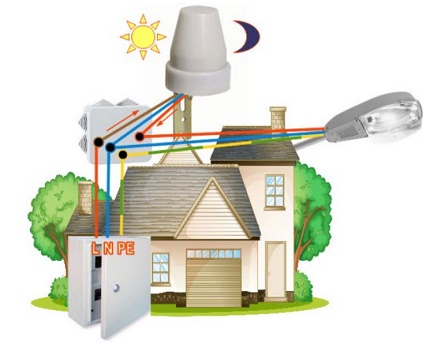
This significantly reduces the consumption of electric energy by street lamps, and also extends their service life. Indeed, in this case they work only when it is really necessary, and not for 8–9 hours a day.
In the private sector, such systems are installed for lighting:
- street stairs;
- territories near cottages;
- park and garden paths;
- gazebos, barbecue areas and outdoor terraces.
Photo relay organizations are mounted when arranging lighting in the courtyards of apartment buildings, in shopping centers and on staircases of high-rise buildings, as well as when illuminating street structures with advertising. Everywhere the goal is the same - saving energy and the resource of lighting devices.
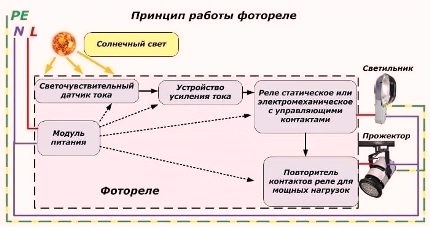
There are several types of photo relay, but the principle of operation is the same for all of them. It has a light-sensitive sensor connected to the power supply that monitors the level of illumination in the controlled area.
At dusk, this sensor closes the relay, including street lighting. When the sun rises again, the street lights are turned off again.
The main types of electrical appliances
Any photocell controlling street illumination has three blocks in its circuit with different functionality:
- Sensing - a semiconductor-based photosensor.
- Intermediate - an electric current amplifier.
- Executive - as such a relay (switch).
Structurally, the first of these elements can be removed from a common housing. But there are devices where this photosensitive sensor is mounted in a single unit with the rest of the internal circuitry of this electrical appliance.
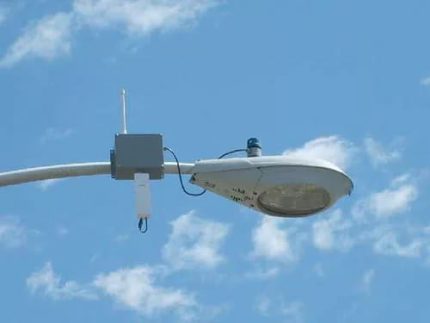
Accordingly, all models of light control photo relay are divided into:
- devices with a built-in photocell;
- devices with a separate photosensor that is removed from the housing.
Equipment with a built-in sensor is installed directly on the street. Its body has higher protection against moisture and dust. In the second case, the switching unit is mounted on a DIN rail in the in-house electrical panel. And the remote sensor is already connected to it through ordinary wires.
In addition to tracking the level of illumination, such control systems are often equipped with built-in motion sensors, timers and various control buttons. In lighting stores, you can also find photorelay, which are built on digital controllers.However, these devices are several times more expensive than conventional models.
Digital devices are expensive, but they can control lighting more precisely. The principle of operation of household photorelay and the basic elements are identical to those that are available in standard devices.
But these options are complemented by a microcontroller, which can be adjusted so that the lights will turn on only at certain hours. This makes it possible to fine-tune the relay, linking its operation with weather conditions and even the month of the year.
Selection of photo relay for street lighting
Before going to the store to purchase a photo sensor for adjusting the street lighting system, you should decide on the number and type of connected lamps. For one or two lamps, a relay is enough, lighting appliances to which will be connected directly.
If there are a lot of light bulbs, then the photo relay will not be able to withstand the current passing through it. In this case, equipment with a magnetic starter is required.
Here, the photosensitive switch launches a special device through which the lighting equipment is already powered. Those. a lot of things in choosing a photosensor model depends on the power of the circuit from the fixtures connected to it.
A special approach and the obligatory performance of preliminary calculations requires the selection of a photo relay for the system solar powered street lighting. Its power and the number of connected devices directly depends on the average annual number of sunny days in the region, as well as on the number of solar panels in the circuit.
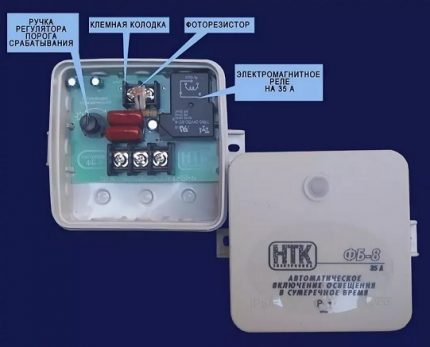
According to the type of connection to the mains, light-controlling relays for street lighting are divided into:
- single-phase (household, for 220 V network);
- three-phase (for networks 380 V).
However, the switching relay itself and the entire circuit with the photosensor are powered by a voltage of 12 V, which comes from a step-down transformer. The choice in favor of a single-phase or three-phase device depends solely on the network of bulbs connected to it and the power it consumes.
For the installation of a photo relay control for street lighting on private houses, it is best to choose ordinary household models at 220 V. They will be enough in excess, especially if economical LED lamps are connected to them.
Technical parameters - what to look at
Some imported electrical appliances are designed for networks of 110 or 127 V. Rarely, but you can stumble upon them in lighting stores. It’s just that they won’t be able to work on Russian 220 V networks. They will need to install an additional transformer. It is better to immediately take the equipment, with the connection of which there will be less problems.
The first and main indicator is degree of protection. For installation in the open, you should choose models with a sealed enclosure under IP65 and above. And for installation under a roof or in a protected shield, a device with IP44 is quite suitable.
The second parameter is trigger thresholdwhich is expressed in suites. Usually this is a range from 2 to 50 Lux. The photo relay has an adjustment for this indicator so that the user can customize it to his personal preferences. Acquiring a device with an unregulated threshold is only a last resort.
The third indicator is type of connected lamps. Often the photo relay is intended exclusively for work with incandescent bulbscreating an active load.
To connect fluorescent devices with an already reactive load, you need to take a different type of twilight switch. And to connect mercury or sodium lamps, you need equipment with an additional protective circuit designed for inrush currents.
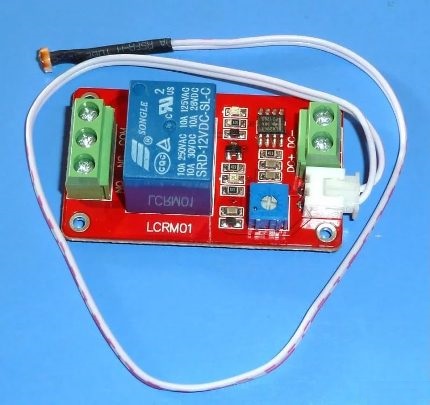
And the last parameters - dimensions and weight. The largest part of the photo relay is a power supply unit with a step-down transformer inside. The photosensor itself (LED) has very small dimensions.
The contactor takes up much more space or magnetic switchthrough which the lighting devices are connected. All this should fit in the electrical panel or near the lamp.
Are additional features important
Many models of light-monitoring relays are supplemented by a motion sensor and a timer. The first guarantees the inclusion of lighting only when moving through a controlled territory of a person, and the second allows you to completely turn off the device during the day, regardless of the level of natural light.

The most expensive models are photo relay with an electronic display and a programmable controller. These devices allow for each season and occasion to lay down their work program.
For example, in winter, the lighting will turn on earlier, and in the summer later. You can also provide for turning off the relay itself, along with street lights after one in the morning, so that they do not burn energy in vain.
The nuances of installing a light sensor
The light control device is usually mounted nearby with a luminaire connected to it. For each model, the wiring diagram is selected in accordance with the instructions in the data sheet. Before starting work, it should be studied without fail.
No special skills are required for installation. It is only necessary to calculate everything so that the lighting appliances do not overload the line. The photo relay practically does not load the network. However RCD in the shield, the photosensor itself must be selected based on the number and power of the connected bulbs.
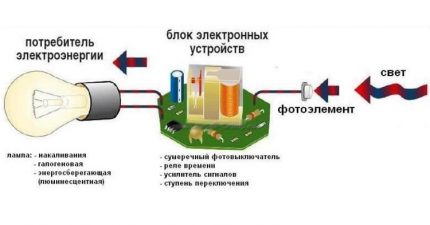
There are several simple rules for mounting photosensitive relays:
- It is recommended to connect the twilight switch and the entire line of lighting devices after it to a separate line from the electrical panel with its own circuit breaker.
- Never install the photo sensor upside down. On the one hand, it should be open to sunlight, and on the other hand, light from artificial lamps should fall on it.
- Do not mount this appliance near flammable materials, near heating equipment, or chemically active media.
- If many light bulbs are connected to the photo relay, then a magnetic starter must be provided in the circuit.
The main thing is that the light from any lamps should not fall on the photocell. Otherwise, it will constantly work not as it should. The photosensor reacts to any light. It doesn’t matter if it is artificial or natural from the sun.
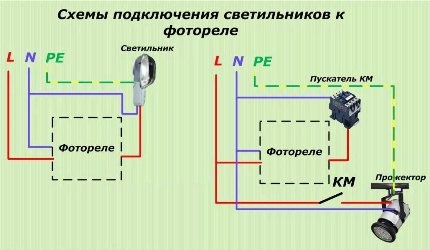
On the photocell housing there is a plan with a color designation of all the wires emanating from it. As a rule, brown goes to phase from the shield (“L”), blue goes to zero (“N”), and red or black goes to the street lamp. It is only necessary to strip the ends of these cores and connect everything in accordance with the attached wiring diagram.
If the photosensor has two contacts, then one of them is connected to the phase from the shield, and the second goes to the lamp. Zero in this case is absent.
In the situation of connecting street lighting through a magnetic starter, it is connected to the photo relay in the same way as a light bulb. And the lighting devices themselves are already powered from it.
In this case, the relay does not close the circuit supplying the lamp, but only the starter. A minimum current passes through the switch in such a circuit, so a cheaper and less powerful device is suitable. All the load here is transferred to an external contactor.
How to choose lamps for the organization of solar street lighting is described in detail in next article, which we advise you to familiarize yourself with.
Conclusions and useful video on the topic
Difficulties with the selection and inclusion of the photosensitive sensor in the street lighting system should not arise. Everything is extremely simple. The video materials below will allow even novice electricians to understand all the intricacies of installing this device.
Video # 1. All the nuances of connecting a day-night photosensor:
Video # 2. Overview of the on / off photo light on the street:
Video # 3. Description of the twilight switch connection scheme via an external contactor:
Light control relays for installation with street lighting devices are simple in design and connection. They greatly simplify the life of owners of private homes and reduce energy consumption. There are many models of such devices in stores. You can always pick up with the necessary parameters for a specific situation.
And if you have knowledge and experience in electrical engineering, then a similar photo relay can be assembled from a photodiode, a conventional diode, relay and a pair of transistors with resistors.
Please write comments in the block below. Ask questions about controversial or difficult issues. Share your own opinion, useful information and photos on the topic of the article.

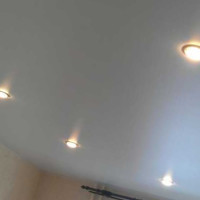 Installation of spotlights in the ceiling: installation instruction + expert advice
Installation of spotlights in the ceiling: installation instruction + expert advice 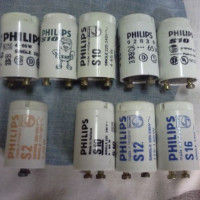 Starter for fluorescent lamps: device, principle of operation, marking + subtleties of choice
Starter for fluorescent lamps: device, principle of operation, marking + subtleties of choice  Lamps over the bed: TOP-10 popular offers and tips for choosing the best
Lamps over the bed: TOP-10 popular offers and tips for choosing the best 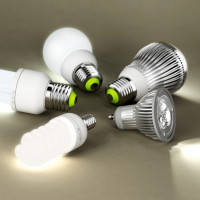 Types of lamp caps: standard marking and varieties of lamp caps
Types of lamp caps: standard marking and varieties of lamp caps 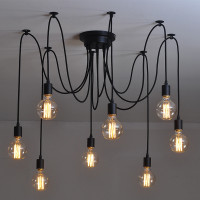 Assembly and installation of the chandelier: detailed instructions for installing and connecting with your own hands
Assembly and installation of the chandelier: detailed instructions for installing and connecting with your own hands 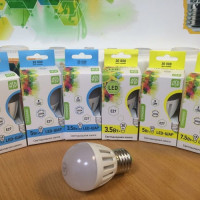 ASD LED bulbs: product line overview + selection tips and reviews
ASD LED bulbs: product line overview + selection tips and reviews  How much does it cost to connect gas to a private house: the price of organizing gas supply
How much does it cost to connect gas to a private house: the price of organizing gas supply  The best washing machines with dryer: model rating and customer tips
The best washing machines with dryer: model rating and customer tips  What is the color temperature of light and the nuances of choosing the temperature of the lamps to suit your needs
What is the color temperature of light and the nuances of choosing the temperature of the lamps to suit your needs  Replacement of a geyser in an apartment: replacement paperwork + basic norms and requirements
Replacement of a geyser in an apartment: replacement paperwork + basic norms and requirements
As an alternative to the photo relay, I use a special adapter for the outlet. Using DIP switches, each of which indicates an hour (there are 24 in total), the time intervals are set when electricity will be supplied to lighting devices and when it will not. You can set as many such segments of energy supply throughout the day. It saves energy on lighting and electric heaters. The photorelay, of course, is a more flexible device for controlling lighting. I will practice.
I use single-phase photo relay in my country house.As additional functions, they have motion sensors installed, this can significantly save energy. Extremely comfortable thing. True, I had to tinker a bit with their installation, but this is not such a problem if you have familiar electricians. And besides, the Internet is full of useful material on this topic.
It seems to me that the best method of saving electricity will not be a photo relay, but a motion sensor. These are installed everywhere. Purely logical - the point is to illuminate a dark street on which there is no one? And as I understand it, the photo relay is exactly for this purpose.
But is such saving necessary at the cost of loss of comfort? Man is not a cat, not a night creature, seeing well in the dark. Fine-tuning the motion sensor is not so simple - either you have to constantly go out into the dark, waiting for the light to turn on, or increase the sensitivity and regularly look at false alarms. It comes to the point that it sometimes triggers from air flows of variable temperature.
But all this when it comes to street use. At home, a motion sensor is a very convenient tool. Here it is correctly configured more than real. The only negative is the inability to use energy-saving light bulbs.
About Pavel did not hear about the LED lamp having motion sensors, illumination? And there are such. For example, Rubetek-RL-3101. The main advantage is that it does not shine while the main lighting of the corridor or enough natural light is working. As it got dark, it starts to turn on, reacting to the passing one. Attached a screenshot with the characteristics.